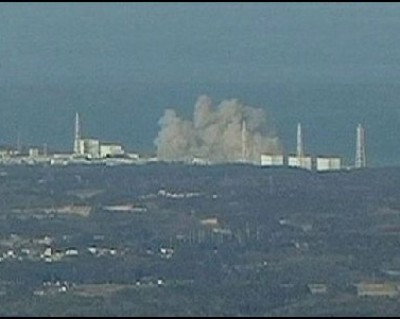By Betsy Taylor
Associated Press Writer
Thursday, May 29, 2008
ST. LOUIS (AP) _ Baby teeth collected in St. Louis in the 1950s and ’60s to measure children’s exposure to atomic bomb fallout will be used in a new study to try and gauge if Cold War bomb testing increased cancer risk.
The new study became possible after an estimated 85,000 baby teeth were discovered in storage in 2001. They were leftover contributions to the St. Louis Baby Tooth Survey, and about 300 of them will be tested as part of the new research.
St. Louis community organizations worked with Washington University to collect about 300,000 baby teeth, for a study that ran from the late 1950s into the 1970s. The study concluded that children were absorbing radioactive fallout from atomic bomb tests, through the consumption of milk from cows that ate contaminated grass. The findings contributed to a ban on aboveground testing of atomic bombs in 1963.
The baby teeth were tested for strontium-90, tiny metal particles in fallout that enter the body by eating and drinking and attached to bone and teeth.
Now, about 6,000 of the leftover teeth are being selected by the nonprofit Radiation and Public Health Project in New York to look at whether fallout from atomic bomb tests increased cancer risk for Americans born during the Cold War, said that organization’s executive director Joseph Mangano.
The teeth in the new study will belong to males with St. Louis addresses, whose teeth were donated to the project between 1958 and 1960. Once updated addresses are located for those men, they’ll be sent a survey asking them if they will answer questions about their health, or efforts will be made to track down their death records.
Ultimately, 300 baby teeth will be tested, one each donated from 100 of the men who have gotten cancer, and 200 who have not. The hypothesis is that the baby teeth from men with cancer will have higher levels of strontium-90 than the teeth of men who do not. “It might show a difference in the average strontium-90 between the two groups,” Mangano said.
The study will cost about $37,000, with funding from private donors and a $15,000 donation from the Oregon Community Foundation in Portland.
Mangano hopes to complete the study by the end of the year and then publish the findings. He hopes it might open other areas for study, looking into particular types of cancer, or extending beyond the initial groups of men. He said men were being tested first because they have a higher death rate than women and were expected to be easier to track down with fewer name changes.
He points to a Newsweek article from 1960 about the baby tooth study, which asks: “But what about the children who have done their growing while strontium-90 levels were high _ are they liable to develop cancer?
“The real news was that 40 or 50 years after the bomb tests went on, we still know virtually nothing about whether the bomb tests harmed Americans,” Mangano said.
The article says when the U.S. Public Health Service began testing the strontium levels in milk, St. Louis tested higher than the rest of the nation. From 1951 to 1962, the United States military tested about 100 nuclear weapons above the Nevada desert, he said. Radioactive chemicals from those tests moved across the nation and entered the food supply through rain, he explained.
“Of all the big cities, St. Louis was probably the hardest hit. There are two words for that _ wind and rain,” he said.
Terry Leet, chair of the Department of Community Health at Saint Louis University, who is not involved in the baby tooth study, serves as a principal investigator for the National Children’s Study, examining genetic and environmental determinants of child health and development.
Leet said based on what he has read so far, the study wouldn’t establish direct cause and effect between strontium-90 exposure and cancer, but could suggest links that might merit additional study.
He noted it’s not a large study, but said like many studies, it was probably limited by what researchers could afford to do.
“They have a rich database that lets them look at prior exposure to strontium-90 and the diseases they (the participants) have today.”
Leet said one concern would be whether researchers involved could adjust for other cancer risk factors. “There are other things you may have been exposed to, or you may be genetically predisposed to cancer,” he said.
“It’s going to be more exploratory, I think, than conclusive,” he said.

